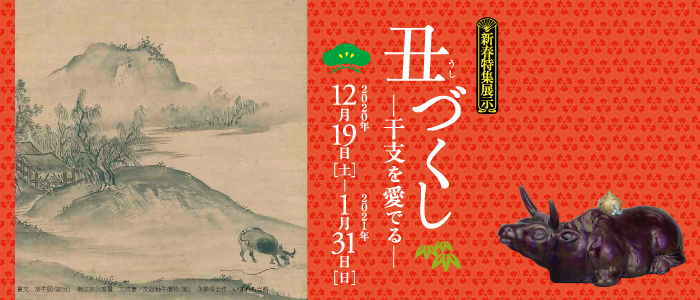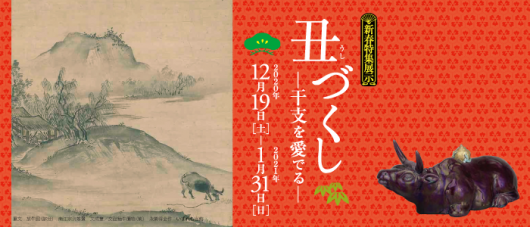Event
Bullish on the New Year: Celebrating the Year of the Ox
December 19, 2020–January 31, 2021
Hours:
9:30 a.m.–5:00 p.m. (Entrance Until 4:30 p.m.)
Closed:
December 19, 2020 (Sat) -January 31, 2021 (Sun)
Admission:
Adult 700 yen
Univ. Student 350 yen
*Admission fee includes admission to all galleries in the Heisei Chishinkan Wing.
*Admission is free for high school students and other youths age 0–17, seniors over 70, visitors with disabilities and one caretaker, and for Campus Members (including faculty). Please show I.D.
https://www.kyohaku.go.jp/eng/project/ushi_2021.html
Venue
Kyoto National Museum
http://www.kyohaku.go.jp/eng/index.html
Access: 527 Chaya-cho, Higashiyama-ku, Kyoto, 605-0931, Japan
Tel:075-525-2473
About
Humans have a long history of living with oxen. About ten thousand years ago, people began domesticating dogs, goats, sheep, and pigs, and then cattle. During the Han dynasty (206 BCE–220 CE) of ancient China, the ox was seen as a symbol of wealth, becoming one of the twelve animals of the zodiac across East Asia.
Bovines were introduced to Japan during the Kofun period (ca. 3rd–6th century). By the Heian period (794–1185), the ox was being used for plowing and hauling cargo; in religious art, it was depicted as a messenger or conveyance for gods and buddhas. During the medieval centuries to follow, imagery of cattle became a standard element in rural landscapes. In Zen Buddhism, the ox symbolized the realm of enlightenment. For the people of Edo period (1615–1868) Japan, the ox came also to embody vigor, vitality, and other traits.
This annual New Year’s exhibition delves deeper into the meanings and artistic imagery of the current animal of the Chinese zodiac. What qualities will you discover through historical representations of the ox?






